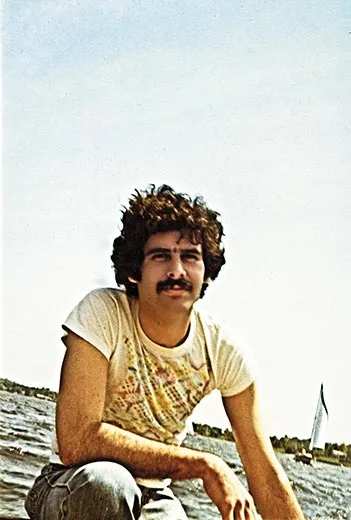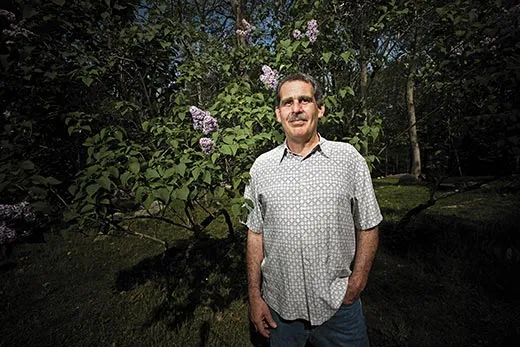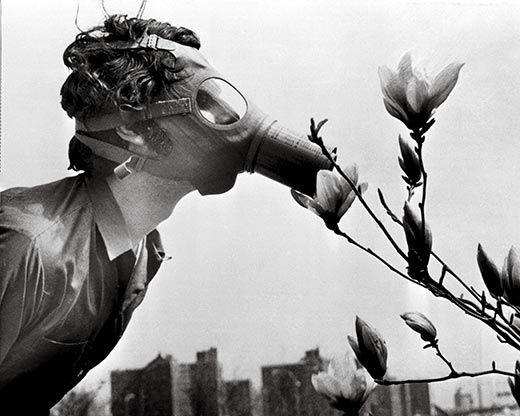An Earth Day Icon, Unmasked
The 1970 photograph became an instant environmental classic, but its subject has remained nameless until now
/https://tf-cmsv2-smithsonianmag-media.s3.amazonaws.com/filer/88/2d/882d140b-0e91-4869-b3ba-4b8bf5f5a9bc/earthday1.jpg)
On the first Earth Day, April 22, 1970, a mood of boisterous celebration filled the particulate-dense air of New York City. Mayor John V. Lindsay traveled around by electric bus. In a speech at Union Square he asked, “Do we want to live or die?”A crowd of 20,000 packed the square to catch a glimpse of Paul Newman standing on a raised platform. Stretches of Fifth Avenue and 14th Street, closed to automobile traffic, were transformed into pedestrian seas, amid which office workers set down picnic blankets and girls handed out fresh daisies. Activists hauled nets of dead fish through Midtown streets. “You’re next, people!” they cried. “You’re next!”
Out of all the hubbub that beset the nation that day 40 years ago—a day when students buried trash-filled caskets and put a Chevy on trial for polluting the air—one image would capture the spirit with particular efficiency and wit. It’s a black-and-white photograph of a young man wearing a vintage gas mask as he stretched to smell the magnolias. Reproduced instantly and ever since, it came to symbolize the occasion. (This magazine, which made its debut in April 1970, published the picture in its 20th-anniversary issue.)
But the photograph presents a few substantial mysteries. For one, there’s no record of who took it. The credit line reads simply “Associated Press,” and the AP’s files identify the photographer only as a “stringer,” or freelancer. For another, though a few newspapers printed the young man’s name with the picture at the time, he too was soon rendered anonymous.
So who was that masked man?
Now it can be told, or retold: his name, resurrected from a Pace College publication dated 1970, is Peter Hallerman. He was then a sophomore at Pace, commuting to its Lower Manhattan campus from Queens. In all these years, he says, he has never been interviewed about the event in question.
As he recalls, he was one of about 30 Pace students who held what was surely one of the day’s puniest demonstrations. They crossed the street from their campus to a park near City Hall and chanted slogans and waved brooms, some of them daring to make a sweep or two. (Their permit forbade them to actually clean the park.)
At least the collegians had planned for maximum impact: they demonstrated at lunch hour, hoping the City Hall press corps would straggle out to gather a bit of Earth Day color. “We figured we’d at least get noticed,” Hallerman says. “Whether it would be reported on was something else.”
Sure enough, a handful of journalists appeared. In a dramatic flourish, Hallerman strapped on a gas mask that he believes his mother, Edith, had saved from her service with the Red Cross during World War II. (Though gas masks were a common Earth Day accessory, this long-snouted beast looked particularly awful.) The AP photographer posed Hallerman in front of a blossoming magnolia tree, then changed his mind. “Try leaning over and smelling those flowers,” Hallerman recalls the photographer saying. Hallerman bent his six-foot frame over a short fence surrounding the tree so that the mask’s proboscis touched the pink-white blossoms. The photographer snapped his shot, and Hallerman thought nothing more of it.
The following week, a Pace administrator presented him with an inch-thick stack of newspaper clippings that included the picture: clearly, it had struck a nerve around the country.
Peter Hallerman wasn’t your standard hippie activist. In 1967 he paraded down Fifth Avenue in support of the Vietnam War. In 1969 he followed the music to Woodstock but remained ignorant of the intricacies of igniting hashish. His status as Earth Day poster boy, however, seems just: “The desire to get out, to camp, to have contact with my environment beyond the city streets, was always very strong for me,” says Hallerman, a former Boy Scout and still an intrepid camper.
Hallerman’s 19th birthday was on May 4, less than two weeks after that inaugural Earth Day. That was the day Ohio National Guardsmen opened fire on protesters at Kent State University, killing four and wounding nine. Four days later, Hallerman attended his first antiwar demonstration, in New York’s financial district; he remembers standing on the steps of the Federal Hall National Memorial when hundreds of construction workers from the World Trade Center building site poured onto the scene, attacking the youthful protesters before storming City Hall in what came to be known as the Hard Hat Riot.
And then his witness-to-history days were over. “My wife, Ellen, jokes that I went through a mini-Forrest Gump phase,” he says.
Rather than return to Pace in the fall of 1970, Hallerman drifted out West, working in coal mines and on railroad crews—fulfilling a high-school guidance counselor’s judgment that he was “uniquely qualified for manual labor.” After six grueling years, he headed back East and into the white-collar world. Now he’s an account executive for Trans World Marketing Corporation of East Rutherford, New Jersey, which designs and makes retail displays, and he lives with his wife on a quiet, leafy lane in South Salem, New York, 50 miles north of the city.
A few years ago, Ellen and their two sons, Ethan and Matthew, now 24 and 21, gave him a mounted blowup of the famous picture for his birthday. But he hasn’t hung it. Even now, he says he’s surprised that it became a cultural touchstone. “I’m flattered to have been involved in something of such historic significance,” he says. “But if that was my 15 minutes of fame, it’s a little frustrating that I was wearing a gas mask and looked like an anteater.”
Timothy Dumas wrote the August 2009 Indelible Images, about a photograph taken at the Woodstock music festival in 1969.


